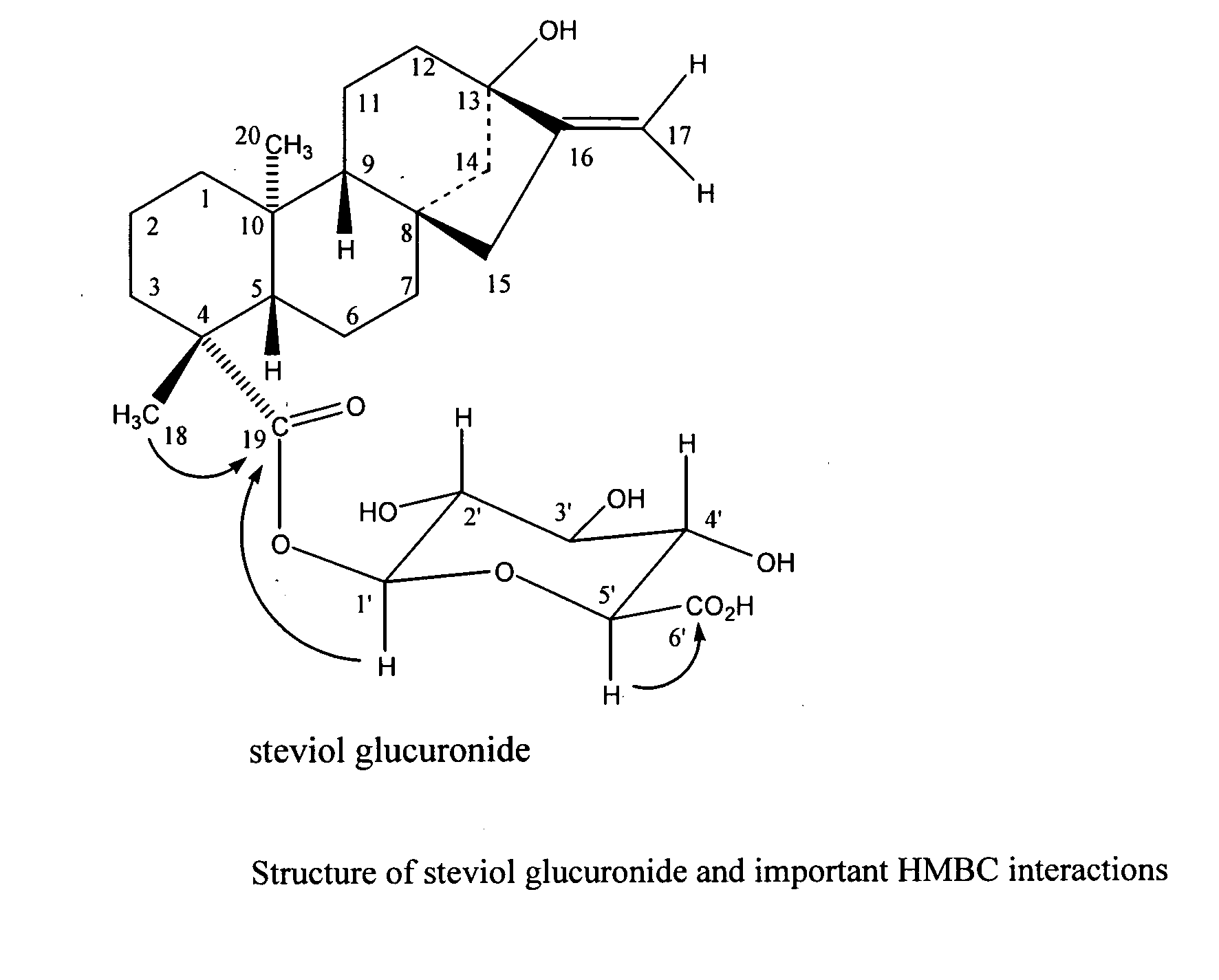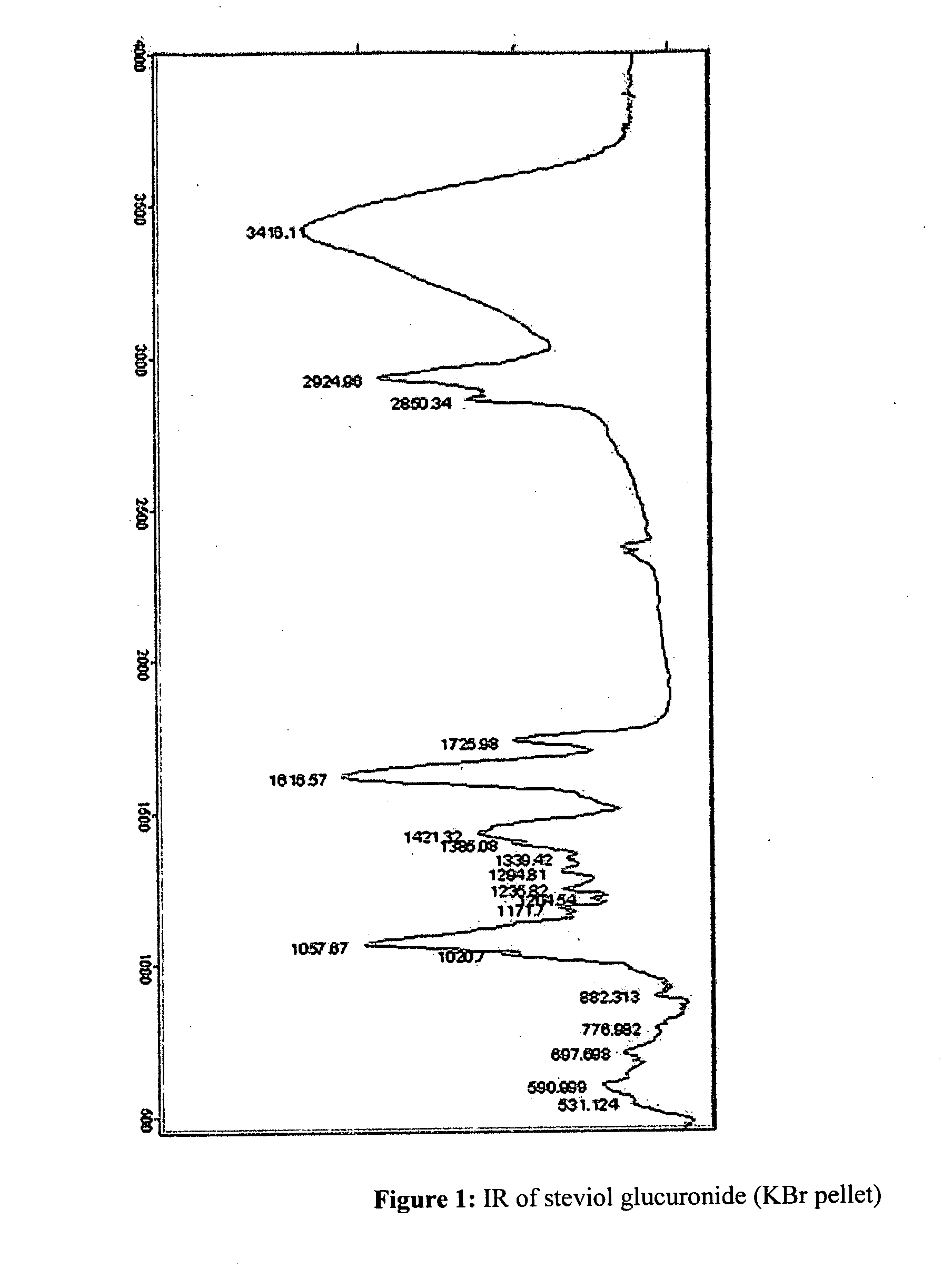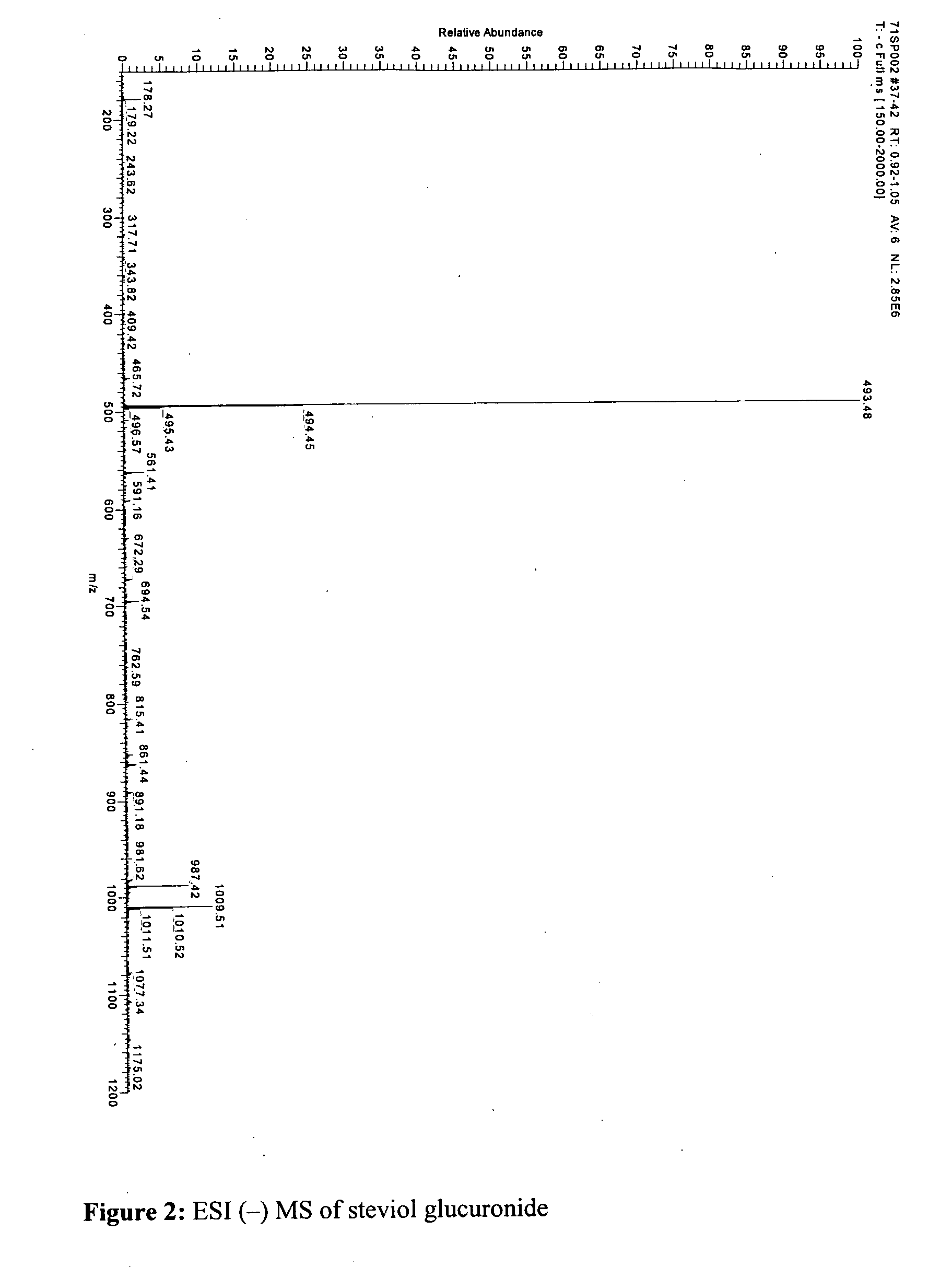Tissue degeneration protection
a tissue degeneration and protection technology, applied in the direction of sugar derivatives, biocide, plant growth regulators, etc., can solve the problem of achieving the effect of hypotension
- Summary
- Abstract
- Description
- Claims
- Application Information
AI Technical Summary
Benefits of technology
Problems solved by technology
Method used
Image
Examples
example 1
Synthesis of Steviol Glucuronide
[0363]Steviolglucuronide was prepared by nucleophilic substitution of the α-ethoxyethyl 2,3,4-tri-O-(α-ethoxyethyl)-1-O-mesyl-D-glucopyranuronate with the tetrabutylammonium salt of steviol. Removal of the acetal protecting groups by mild acid treatment yielded steviolglucuronide. The α-ethoxyethyl 2,3,4-tri-O-(α-ethoxyethyl)-1-O-mesyl-D-glucopyranuronate was prepared from glucuronolactone via a seven-step reaction procedure.
α-ethoxyethyl 2,3,4-tri-O-(α-ethoxyethyl)-1-O-mesyl-D-glucopyranuronate Synthesis from Glucuronolactone Via a Seven-Step Reaction Procedure
Step 1
[0364]Glucuronolactone (0.1 mole) was added to 100 ml methanol containing 0.15 g of sodium methoxide. After 1 h of stirring at room temperature the methanol was removed under reduced pressure. The residue was dissolved in acetic anhydride and 10 ml perchloric acid (3% in acetic anhydride) was added drop wise so that the reaction temperature never exceeded 40° C. After 15 h at room tempera...
example 2
[0382]Capsules containing 100 mg of a diterpenoic tetrahydropyran compound of present invention are usually prepared in one of the following composition:
Active ingredient100mgAvicel200mgPVPPXL15mgAerosil2mgMagnesium stearate1.5mg318.5mg
[0383]The capsules are prepared by mixing the components and filing the mixtures into hard gelatin capsules, size 1.
example 3
Characterisation and Purification of Steviol Glucuronide in Human Urine
[0384]Chemicals. A commercial mixture of steviol glycosides was crystallised repeatedly from MeOH affording stevioside (19-O-β-glucopyranosyl-13-O(β-glucopyranosyl(1-2))-β-glucopyranosyl-steviol) in over 97% purity; impurities were steviolbioside 2.8% and a trace of rebaudioside A. Steviol was made according to (Ogawa, T.; et al. Tetrahedron 1980, 36, 2641-2648) and repeatedly crystallized from MeOH to a purity of more than 99%. Solvents of HPLC grade were from: Acros (H2O, acetonitrile, CHCl3), BDH (MeOH, EtOH, N,N-dimethylformamide), Biosolve (acetone). Triethylamine was from Acros and 4-(bromomethyl)-7-methoxycoumarine (IUPAC name: 4-(bromomethyl)-7-methoxy-2H-chromen-2-one) was from Fluka. β-glucuronidase / sulfatase type H-2 from Helix pomatia digestive juice was from Sigma.
[0385]Urine Fractionation and Derivatisation of steviol containing fractions. The total 24 h urine fraction (between 1124 and 2494 mL) for...
PUM
| Property | Measurement | Unit |
|---|---|---|
| size | aaaaa | aaaaa |
Abstract
Description
Claims
Application Information
 Login to View More
Login to View More - R&D
- Intellectual Property
- Life Sciences
- Materials
- Tech Scout
- Unparalleled Data Quality
- Higher Quality Content
- 60% Fewer Hallucinations
Browse by: Latest US Patents, China's latest patents, Technical Efficacy Thesaurus, Application Domain, Technology Topic, Popular Technical Reports.
© 2025 PatSnap. All rights reserved.Legal|Privacy policy|Modern Slavery Act Transparency Statement|Sitemap|About US| Contact US: help@patsnap.com



